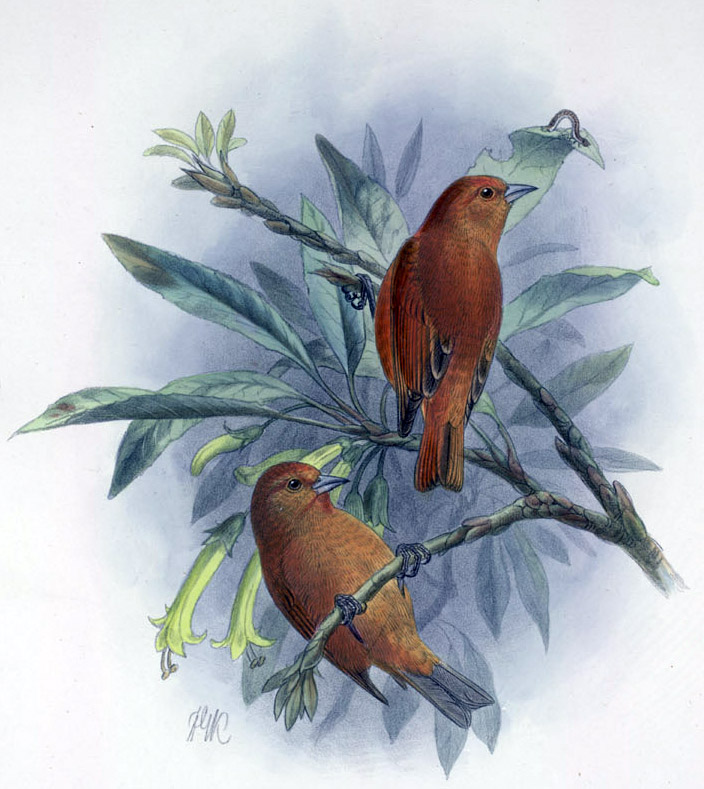ʻAkepeuʻie: Oʻahu ʻAkepa

Names
- ʻŌlelo Hawaiʻi: ʻAkepeuʻie
- Common Name: Oʻahu ʻakepa
- Scientific: Loxops wolstenholmei
Song
No recordings available.
Conservation Status
Extinct. Last seen in the wild in 1901.
Species Information
The ʻAkepeuʻie, or Oʻahu ʻakepa, shares the genus Loxops with Maui ʻakepa (also extinct) and three remaining species: the Hawaiʻi ʻakepa, the ʻalawī, and the ʻakekeʻe. Andrew Bloxam collected specimens of the ʻakepeuʻie in 1825 (Olson 1986). ʻAkepas are known for their unique bills that have adapted to eat insects and ʻōhiʻa buds (Ralph 1994). Their preference for flower buds is unique from the average honeycreeper’s reliance on tree bark for gleaning food. The ʻakepeuʻie was last observed on Oʻahu in 1901.
Distribution
O’ahu. Specimens were collected near Honolulu and observations were made in Nuʻuana Valley and Wahiawā.
Habitat
Formerly montane ʻōhiʻa and koa forests on Oʻahu.
Threats
The exact cause of extinction is unknown. However, the ʻakepeuʻie was likely susceptible to the same factors that threaten other native Hawaiian forest birds, including loss and degradation of habitat, predation by introduced mammals, and disease. The following was likely of particular concern:
- Disease. The precipitous decline of the Maui and Oʻahu subspecies and the restriction of the Hawai‘i ʻakepa to high-elevation forests suggests that disease played an important role in the demise of ʻakepeuʻie.
Photos

John Gerrard Keulemans, Public Domain via Wikimedia
Additional Resources
Pyle, R.L., and P. Pyle. 2017. The Birds of the Hawaiian Islands: Occurrence, History, Distribution, and Status. B.P. Bishop Museum, Honolulu, HI, U.S.A. Version 2 (1 January 2017) http://hbs.bishopmuseum.org/birds/rlp-monograph
Olson, S. L. (1986). The correct specific name for the Akepa of Oahu (Drepanidini, Loxops). Bulletin of the British Ornithologists’ Club.
Ralph, C. J., & Fancy, S. G. (1994). Demography and Movements of the Endangered Akepa and Hawaii Creeper. The Wilson Bulletin, 106(4), 615–628. http://www.jstor.org/stable/4163479
